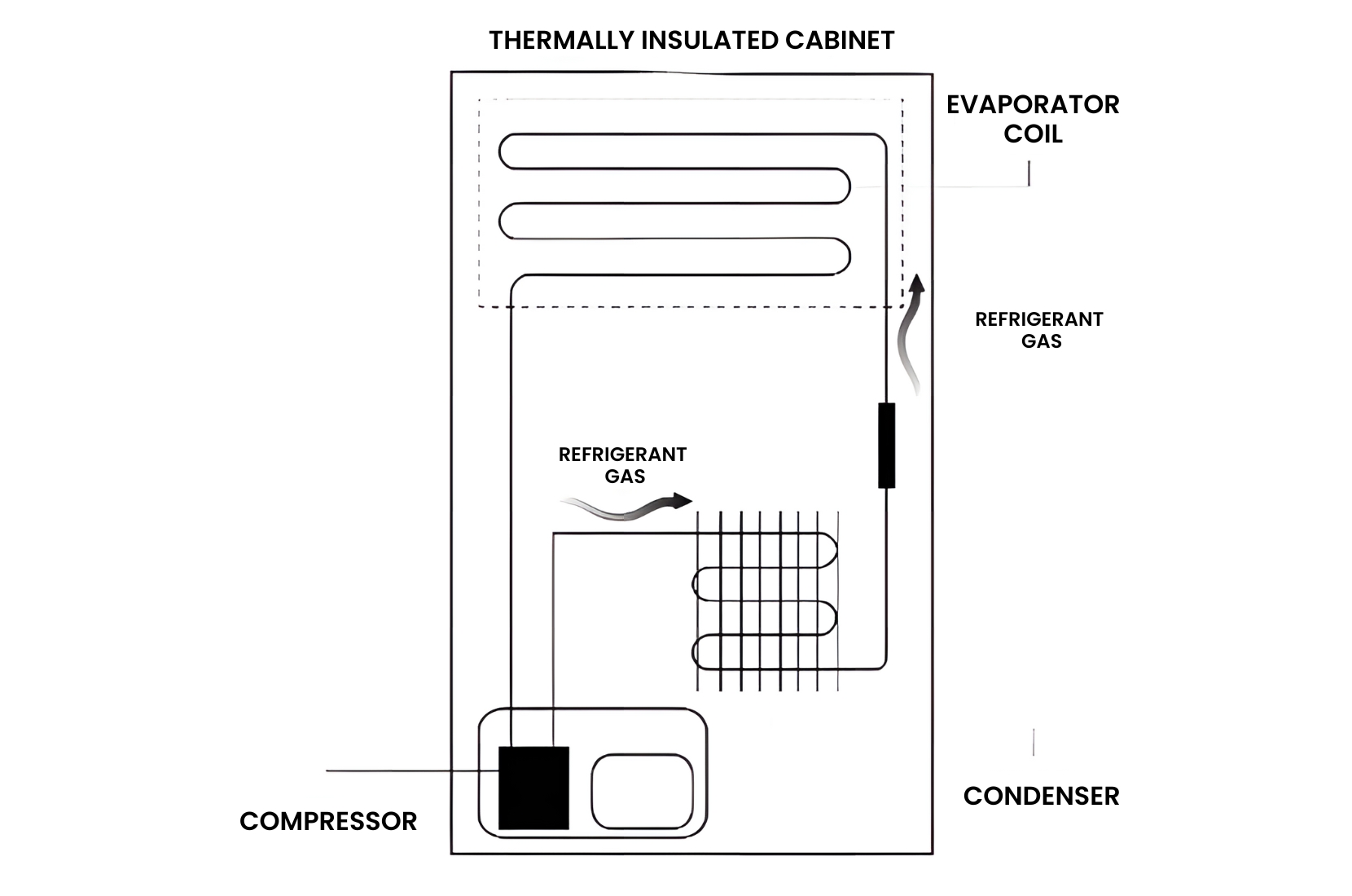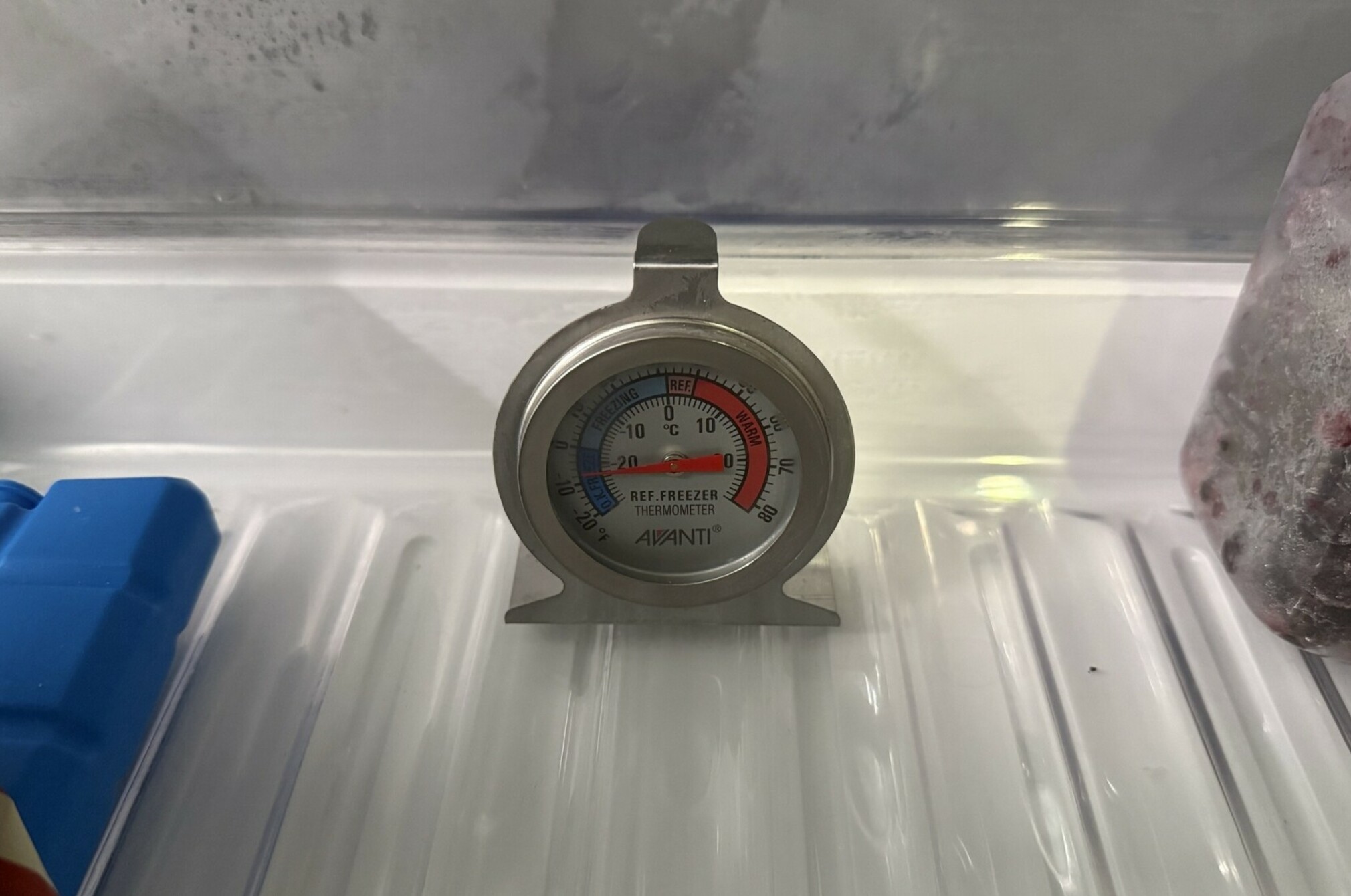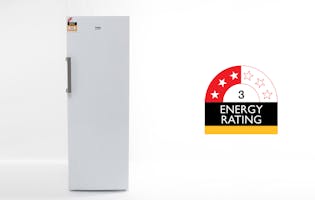Can fridges be more energy efficient?
Most fridges earn fewer than 6 out of 10 energy rating stars – can they get any more energy efficient?

As we all know from our power bills, energy costs money, and the running costs of home appliances can stack up quickly.
Having one of each major appliance in your home can add up to over $30 a month to run (excluding lighting and heating).
Fridges and freezers are a particularly significant running cost as they’re the only appliances that are on 24 hours a day, 7 days a week. And if your fridge or freezer isn’t running to the best of its ability, it will be costing you more.
We regularly survey New Zealanders about their living concerns. In our latest survey, 36% of respondents ranked the cost of energy in their top three concerns.
Fridges then and now
The energy rating label
Every fridge in Aotearoa comes with an energy rating label. The stars on the label shows a model’s energy efficiency at a glance – the more efficient a model is, the more stars it has.
The number of stars are awarded in inverse relation to the fridge’s kWh energy consumption. That is, the more stars a fridge has, the lower its kWh consumption, but only when comparing fridges of the same stye and capacity.
Almost all fridges/freezers made 15 years ago had a high annual energy consumption, with most earning 2 stars or less (average annually: 444kWh). This means they would cost about $110 if they were still running today. But a new model would cost just $76.50 a year to run (306kWh); that’s 31% less in costs a year.
Over the years, we’ve seen a steady increase in the number of energy stars earned as fridges’ energy efficiency has improved and the proportion of models achieving higher stars has increased. Now, 80% of models sold score 3 or more stars.
When we tested fridges in 1992, a medium-sized 338L fridge used 690kWh a year. Today, the average fridge uses less than half that at 306kWh a year. So, if you have an old fridge that’s more than 15 years old, now’s a good time to seriously reconsider keeping it.
While we don’t normally advocate replacing appliances that aren’t kaput, an energy inefficient fridge (by today’s standards) can really be hitting you in the pocket. A 30-year-old fridge would cost around $173 to run today, assuming it’s just as efficient as the day you bought it. A new model would cost just $76.50 to run.
You don’t have to buy a brand-new model fridge though. Even a 3-year-old second-hand model would have significant running cost savings of $82 a year compared with a 90s model.
Over our years of testing fridges, we noticed some use more energy than their energy rating label claim. So, a decade ago, we introduced our own energy test. When we see a fridge model that uses more than 10% of the energy claim on the label, we give it a big thumbs-down fail.
When we first introduced this test, I saw a few fridge models fail each year. In 2024, only one model was left that had failed this test – the Haier HRF454TW3. This is great news for consumers but not for this writer, who now has less things to write about.
Why do fridges use so much energy?
Fridges are always on, so if you have an energy hog of a fridge, that will raise your power bills.
Here’s what’s going on under that cool cover.

A compressor moves refrigerant gas around the fridge. The gas is pushed through a condenser and evaporator, changing from gas into liquid and back into gas in the process. This change is what generates the cold air.
Refrigerants gases
The refrigerant gas is as crucial to a fridge as blood is to humans. Most fridges use R600a gas, which has a high thermal conductivity. This means it cools faster and more efficiently than the older, less efficient, environmentally harmful gases that used to be common components of fridges, such as chlorofluorocarbons (CFCs), hydrochlorofluorocarbons (HCFCs) or hydrofluorocarbons (HFCs).
Compressors
Traditional fridge compressors were reciprocating compressors. They had a crank driving the piston to compress the refrigerant gas. This type of compressor can be bulky and requires oil. But newer linear compressors without a crank are now available. They require less space and don’t need oil. They can potentially achieve 20% to 30% greater efficiency than a traditional compressor due to their lower friction loss.
While there are some questions about the longevity of linear compressors, the Consumer Guarantees Act says products need to be of an acceptable quality and fit for purpose. Therefore, if they fail too early, you have rights for repair or replacement. LG is one major fridge brand using linear compressors.
Insulation
Fridge and freezer performance is affected by the external temperature, so better insulation from external temperatures means higher energy efficiency. Traditional fridge insulations, such as Styrofoam and polyurethane foam, are bulky and take up a lot of space in the fridge’s body. Thinner vacuum insulation panels are common now. They have a higher insulation ‘R’ value and provide more usable fridge space.
Can a fridge reach 10 stars?
The energy rating label scale was expanded up from 6 stars up to 10 in 2009 to account for improvements in energy efficiencies.
While the current average energy rating for fridges is between 3.5 and 4 stars, the maximum achieved to date is 8 stars. With continued advances in technologies, we should see more fridges earning higher stars.
The most energy efficient fridges in 2025
Want to read the full article?
- Thousands of expert product/service reviews
- Personal support through our Consumer Rights Advice Line
- Premium articles and in-depth buying advice
- Add a Consumer magazine for even more exclusive content
Future fridge efficiency technologies
There are a few promising technologies that could shake up the fridge energy efficiency game.
- Magnetic refrigeration This type of refrigeration uses no gas and has the potential to increase a fridge’s energy efficiency by 30%. It works by using magnetocaloric materials that cool to below their original temperature when a magnetic field is removed from around them. But the magnetic materials used are scarce and expensive, so this refrigeration method is not yet commercially sustainable.
- Variable speed / Inverter compressors A traditional compressor has a fixed speed, but variable speed compressors can cool the fridge more efficiently by adaptively adjusting the compressor speed to ensure a more constant temperature is maintained. Think of it like cruise control in a car, but for your fridge.
- Smart technology Smart thermostats can potentially learn the habits of your household and tailor the temperature to fit your family. For example, if the fridge door is opened regularly after school, the fridge could learn to drop its temperature before the kids get home to help maintain a safe temperature later.
Spotting an energy efficient fridge
When you’re shopping for a new fridge, it’s important to be able to identify an energy efficient one.
The energy rating label includes the amount of kWh energy the fridge has been calculated to use over a year in accordance with the Australian/New Zealand standard. So, if you know your power tariff, you can do a quick calculation to find out how much that model will cost you to run.
Label kWh energy consumption x kWh cost (power tariff) = running cost For example, 285kWh x 25c = $71.25
The label also lists the model’s name, so make sure it matches what you’re looking at in store or online. Newer models will also include the total volume of the fridge on the label.
The energy ratings for different types of fridges
Fridge-freezer, bottom-mount freezer: 5+ stars
Fridge-freezer, top-mount freezer: 4.5+ stars
French-door fridge-freezer: 5+ stars
Side-by-side fridge/freezer: 4+ stars
Fridge only (no freezer): 5+ stars
Freezer only: 4+ stars
It’s important to compare like for like with energy rating stars – don’t compare a 600L fridge with a 200L one or a bottom-mount with a side-by-side model as they have different capacities and design.
Freezers
Freezers are slightly less energy efficient on average than fridges and fridge-freezers. Fridges and freezers have different jobs, so they also have different ideal star ratings. The average fridge or fridge-freezer energy rating stars is 3.5–4 stars while, for stand-alone freezers, it’s 3–3.5 stars. This is because freezers must cool to a lower temperature than fridges and keep that temperature as uniform as possible in a bigger space.
10 things you can do to cool your fridge’s power bill

- Keep your fridge in a temperature-stable area, not the garage!
- Don’t add hot food, let it cool to room temperature before putting it in the fridge.
- Check the temperature is correct with a thermometer and adjust if not.
- Defrost food in your fridge, not on the bench, to help cool your fridge (it’s safer too).
- Check the seals aren’t perishing.
- Keep the door closed as much as possible.
- Don’t let frost build up.
- Vacuum around the back of the fridge regularly to keep the compressor and coils clean.
- Leave ventilation space, generally 5cm all sides (check your manual).
- Ditch that old spare fridge in the garage, it’s costing you money!
What are fridge manufacturers doing?
We contacted 14 major fridge manufacturers or distributors and asked them how important energy efficiency is to their brands, what they’re currently doing to improve fridge energy efficiency and what their plans are in this area.
All the companies that responded said energy efficiency is important to them, though some were more enthusiastic about it than others.
- Miele said, “reducing the in-use energy consumption of our products is a crucial aspect”.
- Mitsubishi claimed, “energy efficiency is a top priority for all Mitsubishi Electric fridges and freezers”.
- Panasonic explained, “energy efficiency is a key pillar of our range since the introduction of our fridges to the New Zealand market”.
- Fisher & Paykel said that energy efficiency is a critical factor of its portfolio.
We then asked the manufacturers what technologies they currently have in their fridges that aim to reduce running costs and improve energy efficiency and what their future focus might be. All the companies responded that compressors, insulation or condenser technology were a focus, as would be expected for an appliance that is designed to cool.
- Beko currently use more energy efficient compressors and vacuum insulation panels to improve energy efficiency. It is also looking at changing cooling system designs to provide better temperature control.
- Fisher & Paykel highlighted compressor technology, insulation to reduce external heat interference and the importance of defrosting cooling components as the top three areas of energy use as a focus.
- Midea detailed how its multi-air-flow systems and no-frost technology improve the delivery of cold air within the fridge compartment to help control the temperature. It will also be investing in research into more efficient compressors and more eco-friendly refrigerants and integrating more smart features to help optimise cycles.
- Miele explained how it’s used multiple-speed compressors for 15 years as well as vacuum insulation panels, low-power fans and fan-cooled condensers and refrigerant control devices to improve energy efficiency. It’s also planning to up its insulation game. It will use vacuum insulation panels, which are thinner and more efficient than traditional forms of insulation.
- Mitsubishi said it currently uses an energy saving mode, which operates the optimal state for each compartment. Future developments in the short term will definitely include feature options, such as AI technology and eventually WiFi control.
- Panasonic uses inverter compressors and AI Econavi smart technology to save energy.
We know that growing energy costs are a concern for consumers, but do the manufacturers and distributors know this? We asked if they had observed a shift in consumer concerns around energy efficiency and received a mixed bag of answers.
- Beko, Fisher & Paykel, Miele, Mitsubishi, Panasonic and Midea all agreed it was an area of concern for them.
- Award, the distributor of Liebherr, agreed and said, “Sustainable and low energy building at the architectural part of the market is seeing increased need for high-efficiency products as part of the overall home energy reduction targets.”
The manufacturers or distributors of Akai, Bosch, Belling, Euromaid, Living & Co, LG, Omega, Robinhood and Samsung did not respond to our questions.
We've tested 206 fridges.
Find the right one for you.
Beko

Beko
.jpg&w=315&q=75)
Bosch
.jpg&w=315&q=75)
Member comments
Get access to comment